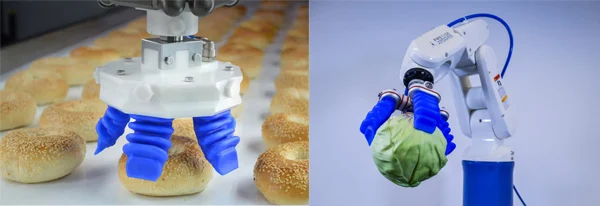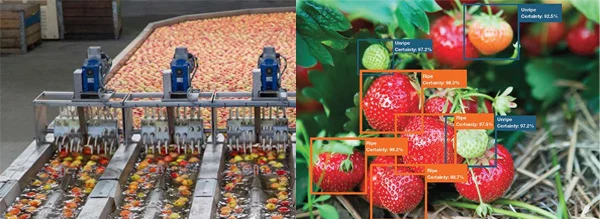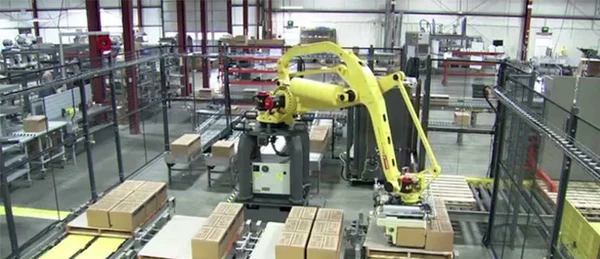How To Make Technology Work As Your Packaging Solution While Creating A Profit
Due to uncertain times and the need to streamline manufacturing processes as much as possible while turning the best profit, technological advancements have been made in every industry and are now being heavily implemented everywhere. By now you’ve heard all about Industry 4.0 and how it can be applied to factory automation. But how does this effect your packaging needs and that of the packaging industry overall? Here are some of the top automation trends for packaging in 2022 and how these trends can help your business.
Robots & CoBots
The most obvious automation trend is using robots and cobots to automate such packaging tasks as filling, packing and palletizing. Robots are used to perform just about any repetitive task such as assembly, machine tending, quality assurance, palletizing and picking-and-placing tasks. CoBots, short for collaborative robots, can do the same and are often utilized where more than one robot is needed to perform a sequence of tasks. Because CoBots are premade with safety-compliant designs, CoBots are typically rented or leased and are especially great to use in conjunction with human applications or in areas where people work on the production floor.
End-Of-Arm Tooling (EOAT) for robotics
EOAT is being used more and more in automation packaging as many technological advances have been recently made. Developments include robotic hands that now have sensitive grip and can automatically adjust through Artificial Intelligence (AI), making this function useful for picking and packing applications.
For example, the idea of EOAT being used to pick and pack food items as delicate as tomatoes or grapes hasn’t been considered until now due to the risk of crushing items, however; because of newly-designed soft, spring-like fabricated fingers can sensitively adjust grip on objects, the application is now a reality. What’s more, EOAT changeovers needed for running different jobs has been a chore in the past, producing a lot of unwanted downtime with needing to unbolt one tool, bolt on another and, in many cases, having to change programming to accommodate the new job to be run. Because of EOAT advancements, however, operators are now quickly able to swap out one tool for another during change outs, along with grippers, scanners and packaging tools. Some new EOAT can also be used among different types of robot arms and models, instead of just one, making them convenient to use for multiple applications and compatible with different styles of robots and cobots.
NEW ADVANCEMENTS IN EOAT ROBOTICS WITH SENSITIVE GRIPPERS, POWERED BY AI, ALLOW FOR NEWFOUND APPLICATIONS IN FOOD PICKING AND PACKAGING. TO THE LEFT, DELICATE GRIPPERS ARE GENTLE ENOUGH TO GRASP BREAD PRODUCTS WITHOUT CRUSHING THEM. TO THE RIGHT, THE SAME GRIPPERS PICK UP A HEAD OF CABBAGE WITHOUT DAMAGING ANY OF THE LEAVES!

Machine Learning / AI-Vision Systems
Machine learning, such as what is used in Artificial Intelligence-vision systems (referred to as AI), can help greatly in automation packaging as well. AI-vision systems can be used for inspection purposes and for lowering costs associated with inspection. Adaptable systems, such as the AI Gateway from Pleora Technologies, can be integrated with current cameras, sensors and equipment and can be programmed to update your existing systems for added functionalities. AI-vision systems can be of special use in food picking and packaging as they can inspect produce and predict shelf life which can help immensely to reduce waste. AI-vision systems are also being used more and more often in a variety of ways to enhance quality control, inspection and production efficiency, such as by taking pictures of completed products to examine package quality.
BELOW (LEFT), AN AI VISION SYSTEM IS USED TO SORT APPLES. THROUGH MACHINE LEARNING, SENSORS AND CAMERAS CAN DETECT DEFECTS, AS WELL AS RECOGNIZE WHICH APPLES ARE NOT AS RIPE AS OTHERS AND SEND THEM TO BE USED IN A SEPARATE FOOD CLASSIFICATION. ALL OF THIS IS DONE AT HIGH RATES OF SPEED TO IMPROVE FOOD QUALITY AND REDUCE LABOR COSTS. TO THE RIGHT, PHOTONICS IS USED TO INSPECT THE RIPENESS OF STRAWBERRIES FOR PICKING AND PACKAGING. PHOTONICS CAN ALSO BE USED TO PREDICT THE SHELF LIFE OF PRODUCTS AND GREATLY REDUCE WASTE.

Food Packaging & Processing
The key to more profitable food packaging is knowing what goods should be produced in large amounts to yield the greatest profit margins. Technology can certainly help in this department. Automation is now being used to enhance packaging, as well as improving food safety and increasing shelf life.
All these automation trends 2022 are currently being used in packaging as well as in all types of factory automation, however; due to universal pressures to continue manufacturing processes while turning a profit during labor shortages has caused plant managers and staff to implement and rely more and more on automation as a solution.
No matter where you are in the automation packaging process … whether you’ve invested in all new equipment, are retrofitting a few pieces of machinery, or are continuing to use your current equipment as is, Mueller Electric is here to help you with automation solutions. Mueller Electric can supply you with the factory automation cables needed to link all your equipment together for ultimate communication and automation purposes. With a large array of UL-listed cables and custom-made cable solutions, Mueller Electric can find a solution for you that gives you ultimate connectivity. Feel free to contact Mueller Electric or call 800.955.2629 to find out what Mueller can do for you.

